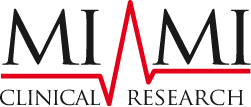Global R&D Pipeline
Global R&D Pipeline: The Engine of Medical Innovation
The global research and development (R&D) pipeline serves as the cornerstone of medical innovation, representing the ongoing effort to identify, test, and deliver new drugs that can reshape the future of healthcare. With more than 6,200 drug candidates in various clinical stages—ranging from early discovery to late-phase trials—this pipeline demonstrates the pharmaceutical and biotech industries’ commitment to advancing science and improving patient outcomes worldwide.


A Diverse and Expanding Pipeline
The sheer volume of drug candidates under development reflects the increasing complexity and scope of modern medicine. These compounds target a wide spectrum of therapeutic areas, including but not limited to:
- Oncology
- Neurology
- Cardiology
- Endocrinology
- Infectious diseases
- Rare and orphan diseases
Among these, oncology dominates the global pipeline, comprising nearly one-third of all clinical trials. The urgent need for better cancer treatments and the rise of precision oncology have led to a surge in immunotherapies, targeted therapies, and combination regimens.
Equally significant is the growing attention to rare diseases, many of which were historically overlooked due to small patient populations and limited commercial potential. Thanks to regulatory incentives like the Orphan Drug Act in the U.S. and similar programs in the EU and Japan, companies are now more motivated to pursue therapies for these underserved conditions. These incentives include benefits such as market exclusivity, fee waivers, and tax credits, which help offset the high costs and risks of drug development.
Globalization of R&D
Pharmaceutical innovation is no longer concentrated in traditional powerhouses like the United States and Europe. Countries such as China, India, and South Korea are becoming major players in the clinical research ecosystem. These emerging markets are investing heavily in healthcare infrastructure, regulatory reform, and scientific talent to position themselves as global leaders in drug development.
This geographic diversification benefits the industry in multiple ways. It provides access to larger and more diverse patient populations, accelerates patient recruitment, and encourages cross-border collaboration. Global trials are increasingly standard for late-phase studies, ensuring that new treatments are applicable to varied genetic and demographic backgrounds.


Technological Innovation in the Pipeline
The growth of the R&D pipeline is closely tied to the rapid integration of technology into clinical research. Innovations such as:
- Artificial intelligence (AI) for drug discovery
- Digital biomarkers
- Remote patient monitoring
- Decentralized clinical trials (DCTs)
…are transforming the way studies are designed, conducted, and analyzed. These tools enable faster hypothesis testing, improve data accuracy, and enhance patient retention and engagement.
For example, AI can sift through vast datasets to identify promising drug targets, predict molecule behavior, or optimize trial protocols. Meanwhile, DCTs—enabled by wearable technology and telemedicine—allow participants to engage in studies from their homes, improving accessibility and reducing dropout rates.
Investment Trends and Industry Dynamics
The size of the global R&D pipeline also mirrors the massive financial investments being poured into drug development. Top pharmaceutical companies typically dedicate 15–20% of their annual revenue to R&D. Moreover, venture capital investment in biotech startups has reached record highs in recent years, especially in emerging fields like:
- mRNA therapeutics
- Gene editing (e.g., CRISPR)
- Cell-based immunotherapies
- Microbiome therapies
These investments fuel early-stage innovation while strategic collaborations between startups, academia, and large pharmaceutical firms help translate scientific discoveries into market-ready products. These partnerships allow smaller entities to focus on breakthrough science, while leveraging the regulatory experience, manufacturing capabilities, and distribution channels of larger players during later development stages.


Impact on Patients and the Healthcare Ecosystem
A pipeline this robust carries immense implications for both patients and the industry. For patients, it offers hope for conditions that currently lack effective treatments, including many rare diseases and treatment-resistant cancers. The promise of personalized medicine, where therapies are tailored to an individual’s genetic makeup, is gradually becoming a reality thanks to this expanding pipeline.
For healthcare systems and providers, the growing pipeline signifies:
- Increased therapeutic options
- Improved disease management
- More competition, potentially reducing costs
However, this growth also presents significant operational challenges. Managing trial complexity, maintaining data integrity across multiple sites, avoiding duplication of efforts, and ensuring timely regulatory review are ongoing concerns. As more treatments approach market readiness, regulatory agencies must evolve to handle the increasing volume without compromising scientific rigor.
Conclusion
The global R&D pipeline, with over 6,200 active drug candidates, is more than just a number—it is a reflection of the pharmaceutical industry’s ambition, innovation, and global collaboration. From cancer to COVID-19, from gene therapy to AI-driven discovery, the pipeline captures the diversity and dynamism of 21st-century medicine. As emerging technologies, global partnerships, and patient-centered approaches continue to advance, the size and impact of the R&D pipeline will remain a powerful indicator of the future of healthcare.


